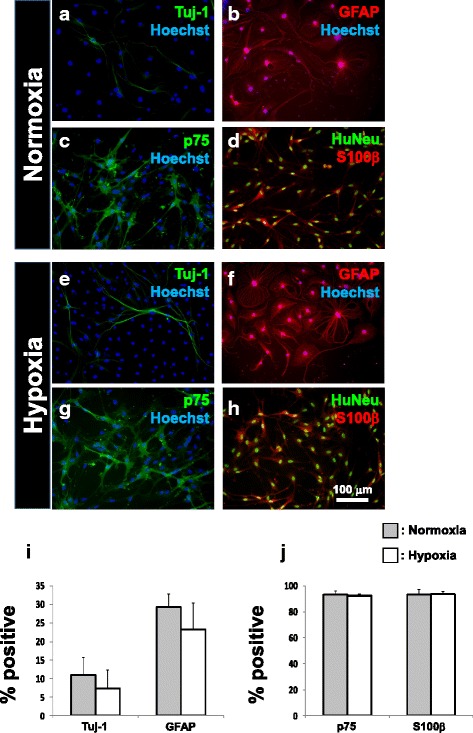Fig. 5.

Human BMSC-derived neurospheres can generate neuron-like and glia-like cells. Cells that exited from adherent cultures of neurospheres in low-serum medium differentiated into class III beta-tubulin (Tuj-1) expressing neuron-like cells (a, e) as well as glial fibrillary acidic protein (GFAP)-expressing glia-like cells (b, f). The Tuj-1- and GFAP-positive fractions did not differ significantly between the normoxia- and hypoxia-treated groups (i). Adherent cultures of neurospheres in glia-inducing medium fostered differentiation of SCLCs, showing bipolar morphology, and immunopositivity for the Schwann cell markers p75 (c, g) and S100β (d, h). Numbers of p75- and S100β-positive cells derived from normoxia- and hypoxia-treated BMSCs did not differ (j). Mean ± SD, n = 4 for neuronal/glial differentiation, n = 3 for SCLC differentiation; *p < 0.05, **p < 0.01. HuNeu human nuclear antigen
